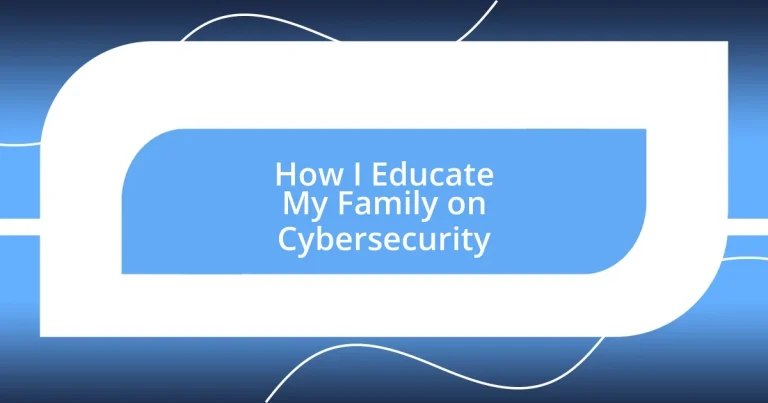Key takeaways:
- Understanding cybersecurity basics, like recognizing phishing and the need for unique passwords, empowers individuals to protect themselves online.
- Creating a family cybersecurity policy fosters open communication and shared responsibility, enhancing awareness among family members about safe online practices.
- Engaging methods, such as interactive lessons and regular password updates, promote deeper learning and proactive cybersecurity habits within the family.
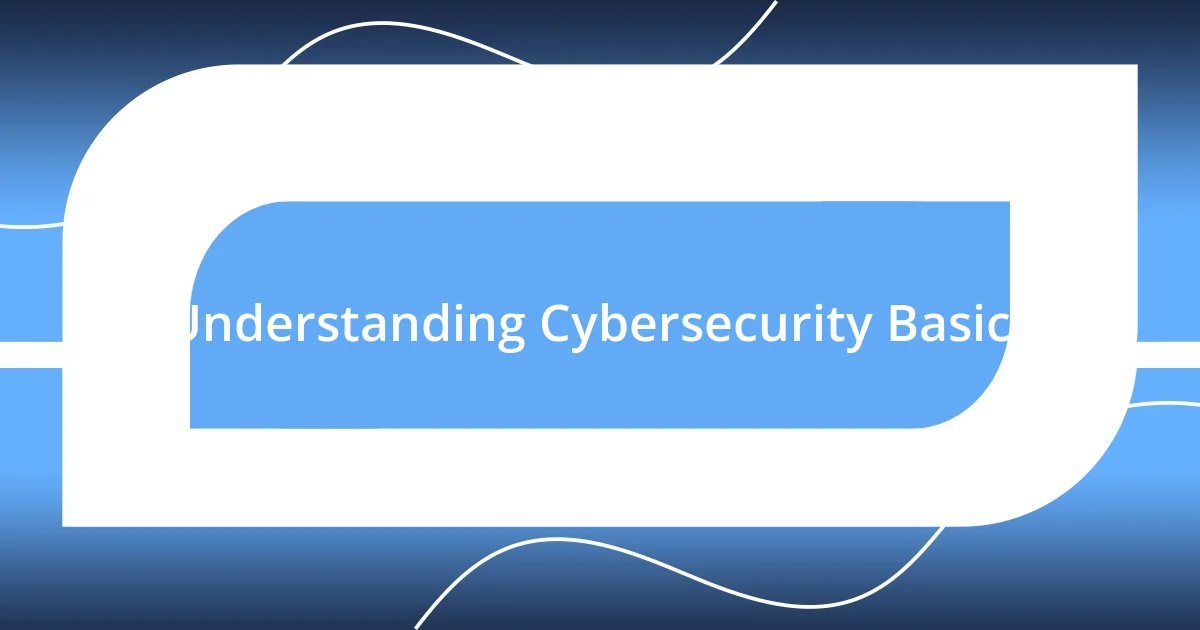
Understanding Cybersecurity Basics
When I first dove into the realm of cybersecurity, I felt a wave of anxiety wash over me. Terms like “phishing,” “malware,” and “firewalls” felt overwhelming. But I learned that understanding these basics is crucial for protecting ourselves online. For example, phishing attempts often come disguised as trustworthy emails, which can make anyone pause. Has that ever happened to you?
One of the simplest concepts that resonated with me was the importance of strong, unique passwords for each account. I remember the day I set aside some time to create a password manager. At first, I was skeptical—would this really help? But once I started using it, I felt a sense of empowerment knowing my information was secure. Do you have a favorite password trick that keeps you safer online?
Equally important is recognizing the significance of software updates. I recall neglecting them in the past, thinking they were just an inconvenience. However, I came to understand that these updates often contain vital security patches that protect against vulnerabilities. It’s a small effort that yields significant rewards. Have you thought about when you last updated your devices?
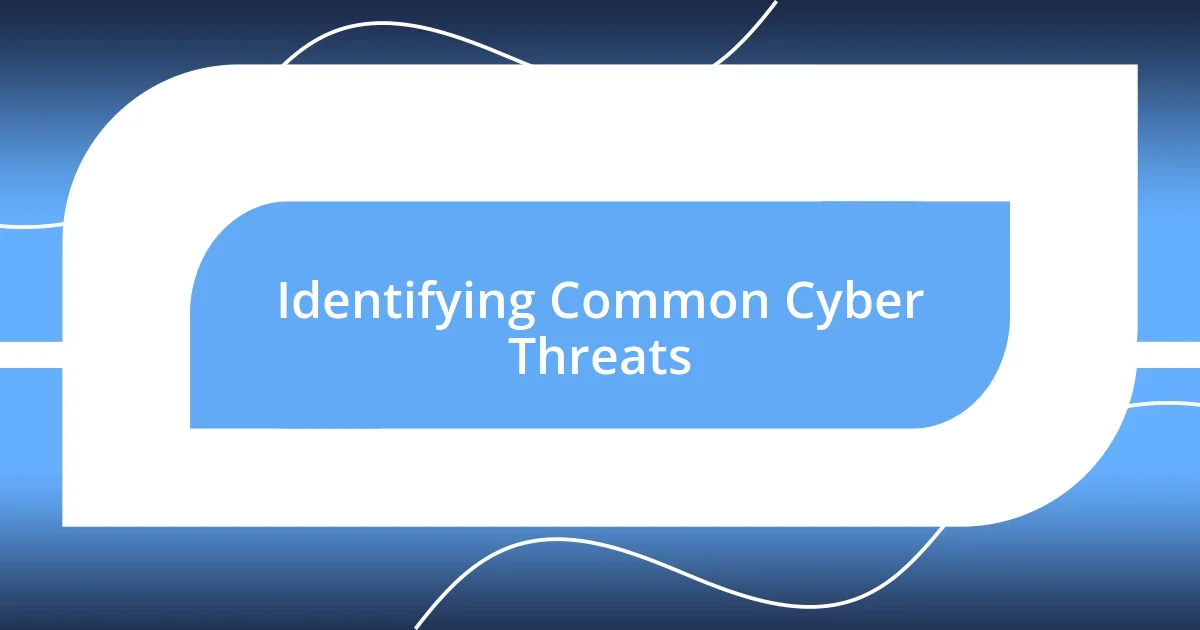
Identifying Common Cyber Threats
One of the most eye-opening discoveries for me was the variety of cyber threats that lurk online. It became apparent that these threats don’t always look sinister; they can be deceptively innocent. For instance, I once clicked on a link from a seemingly harmless website, only to realize too late that it was a trap. This experience underscored how stealthy cyber threats can be. Identifying them requires a vigilant eye and a healthy dose of skepticism.
Here are some common threats to look out for:
– Phishing: Emails or messages that trick you into revealing personal information.
– Malware: Malicious software designed to harm devices or steal data.
– Ransomware: A type of malware that locks your files until a ransom is paid.
– Social Engineering: Manipulating individuals into giving up confidential information.
– Adware: Software that automatically displays or downloads advertising material, often leading to trackers.
Each of these threats carries unique risks, but the underlying reminder here is to stay alert. I often remind my family that even the most tech-savvy individuals can fall prey, which is why education and awareness are our best defenses.
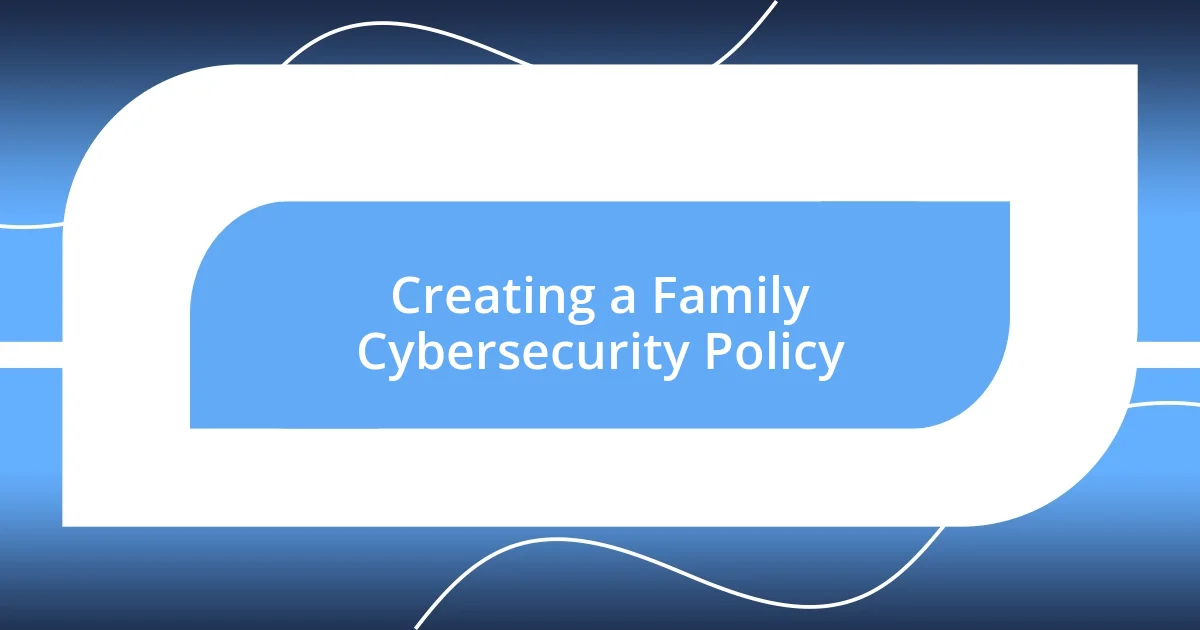
Creating a Family Cybersecurity Policy
Creating a cybersecurity policy for my family was one of those lightbulb moments that changed everything. I realized that having a set of explicit guidelines creates a uniform understanding of expectations and responsibilities. For instance, we decided to limit screen time and have regular discussions about safe online behavior, which has truly fostered more open communication about our digital lives.
One area I prioritized in our policy was the importance of device usage rules. I vividly recall a weekend when my youngest accidentally downloaded a suspicious app, thinking it was a game. Thankfully, I had set guidelines about downloading apps which helped prevent potential chaos. We formulated rule reminders like “always ask before installing any app” and “stick to trusted sources,” protecting us from future mishaps. It’s incredible how such small shifts can have a big impact.
In drafting our family policy, I found it essential to involve everyone in the creation process. By sitting down together, we discussed our concerns and ideas, making each family member feel valued and invested in our approach to cybersecurity. This collaborative effort not only enhanced our policy but also opened up a dialogue that I cherish. How often do you have family discussions about cybersecurity? I recommend making it a regular part of your routine; the benefits of shared knowledge are profound.
| Policy Aspect | Family Input |
|---|---|
| Device Usage Rules | Set guidelines on app downloads and internet browsing. |
| Screen Time Limits | Agree on daily limits to reduce exposure. |
| Education Sessions | Regular family meetings to discuss threats and safety tips. |
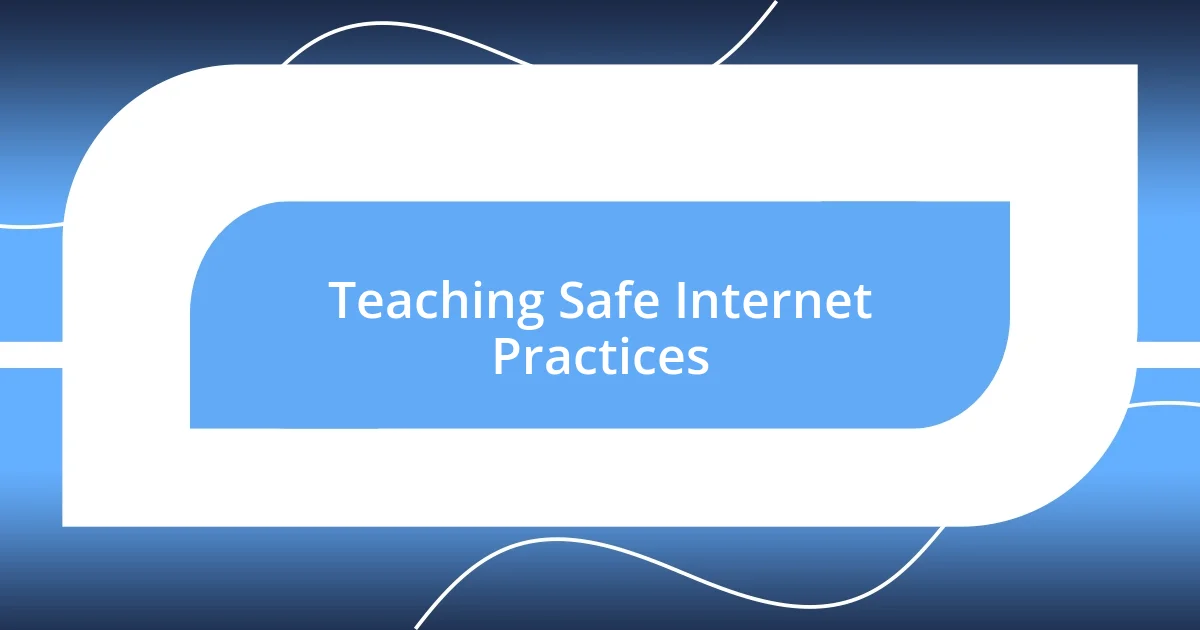
Teaching Safe Internet Practices
Teaching my family safe internet practices is something I approach with both diligence and creativity. For example, I turned our weekly family dinner into an engaging discussion about potential online dangers. By sharing a story about a friend who fell for a phishing scam, I could see the intensity in my children’s eyes. It struck me, in that moment, how relatable such experiences can be. If a trusted adult could be fooled, what about them? I always remind my family that it’s not just about understanding the risks—it’s about learning how to navigate the digital world confidently.
Another technique I have found effective is turning lessons into interactive sessions. One afternoon, I created a game called “Spot the Scam” using real-world examples of emails and messages we’ve received. Each family member took turns identifying which ones were legitimate and which were phishing attempts. This made the topic not just serious but fun! I remember my youngest son jumping up and down, calling out, “This one looks fishy!” The energy in the room was palpable, and I realized that when we embody the teaching, it becomes so much more impactful. Don’t you think engaging methods foster deeper learning?
Finally, I emphasize the importance of privacy settings on social media accounts. There was a moment when my teenage daughter was about to make her profile public. As I expressed my concern, I noticed her frustration. But rather than imposing rules, I asked her how she felt about sharing her life online. This opened a meaningful conversation about boundaries and digital footprints. Together, we adjusted her privacy settings while discussing why they matter. It’s rewarding to see her becoming more aware and proactive. Have you had similar experiences in discussing boundaries with your family? These dialogues are crucial in empowering them to think critically about their digital presence.
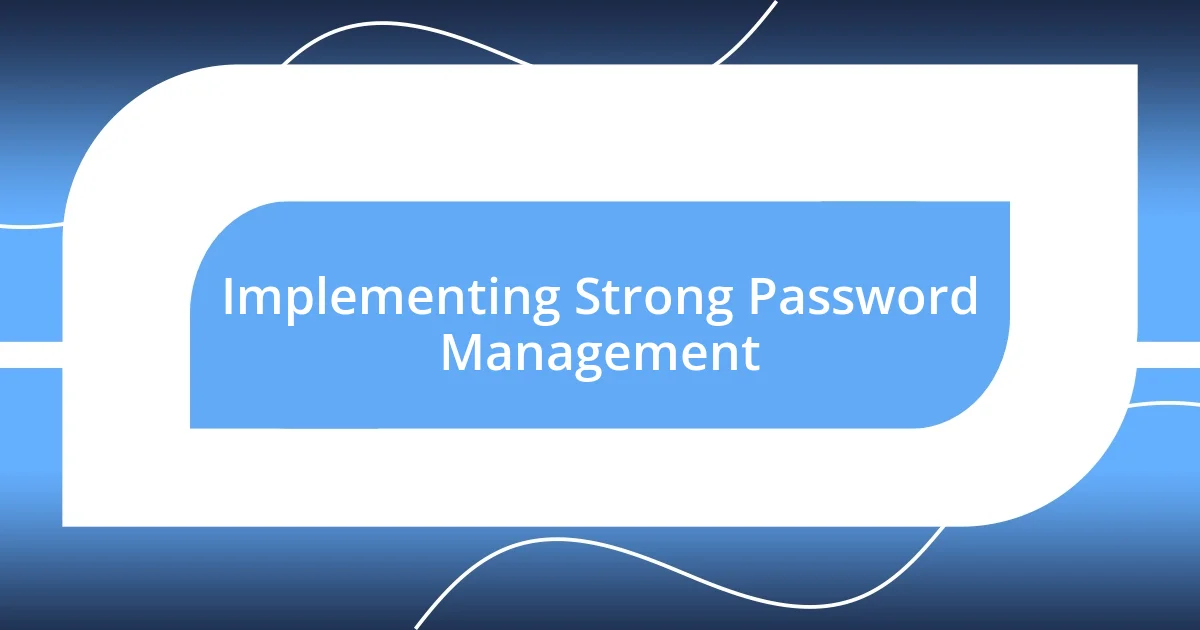
Implementing Strong Password Management
When it comes to password management, I’ve learned the importance of creating strong, unique passwords for every account. I remember the first time I discovered a family member using the same password across multiple platforms. It was an eye-opener! We had a sit-down where I explained how that practice can expose us to serious risks. Now, we make it a game to come up with clever, memorable passwords that even a hacker would struggle to guess.
To further streamline our password management, I introduced the use of a password manager. The look on my sister’s face when I demonstrated how it works was priceless—she was skeptical at first, but seeing how easy it was to generate and store complex passwords changed her mind. I’ve stressed the value of this tool in not only keeping our accounts secure but also in preventing password fatigue. Have you ever felt overwhelmed juggling multiple passwords? A password manager can simplify that chaos.
Regularly updating passwords is another critical practice we adhere to as a family. I recall a moment when I learned about a significant data breach impacting a service we frequently used. Instead of panicking, we turned it into a family activity, sitting down together to update our passwords across affected sites. The sense of shared responsibility and teamwork truly strengthened our bond, and it highlighted how essential it is to stay proactive in cybersecurity. How often does your family think about reviewing password security? Making it a routine can be a powerful step toward safeguarding your digital lives.












